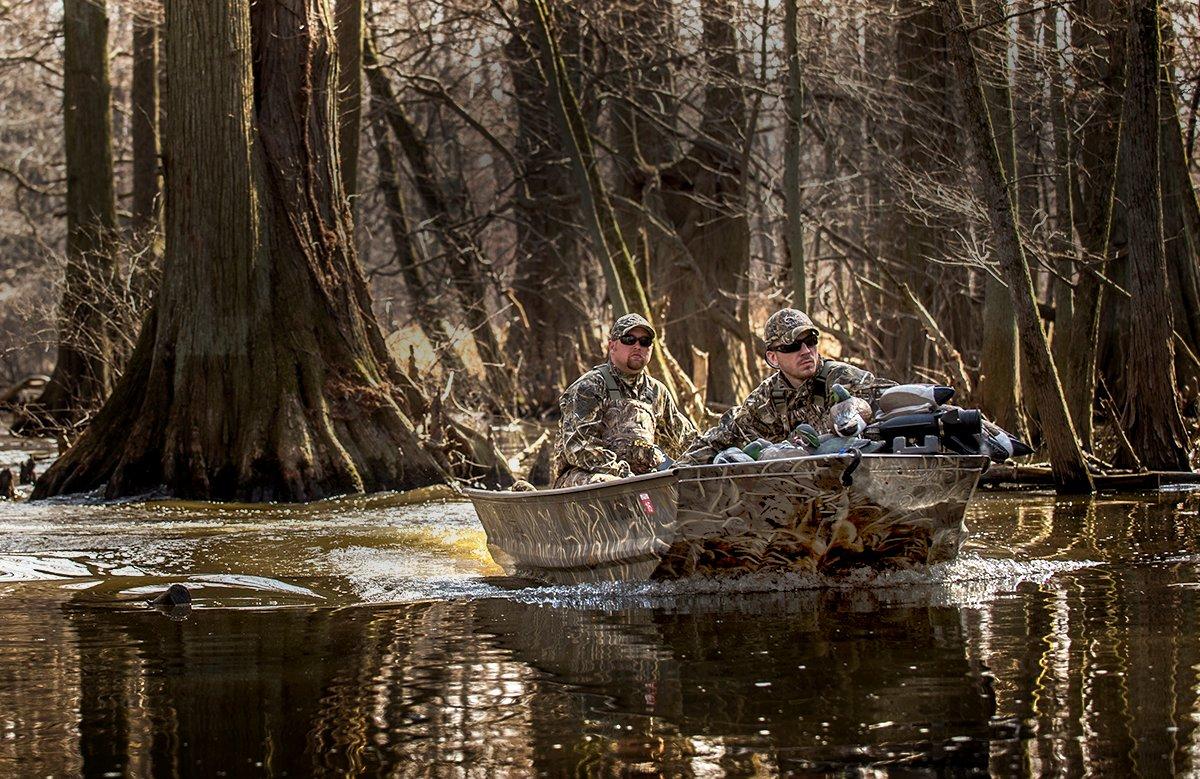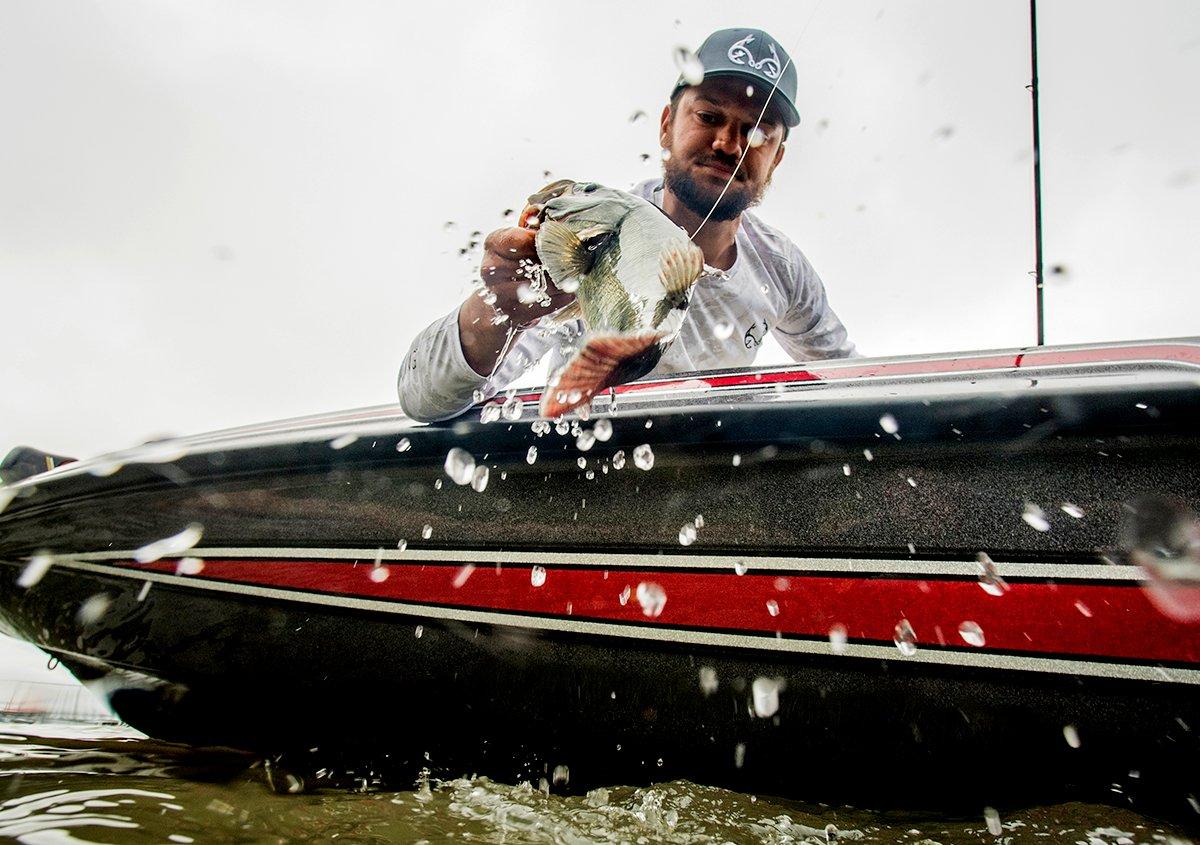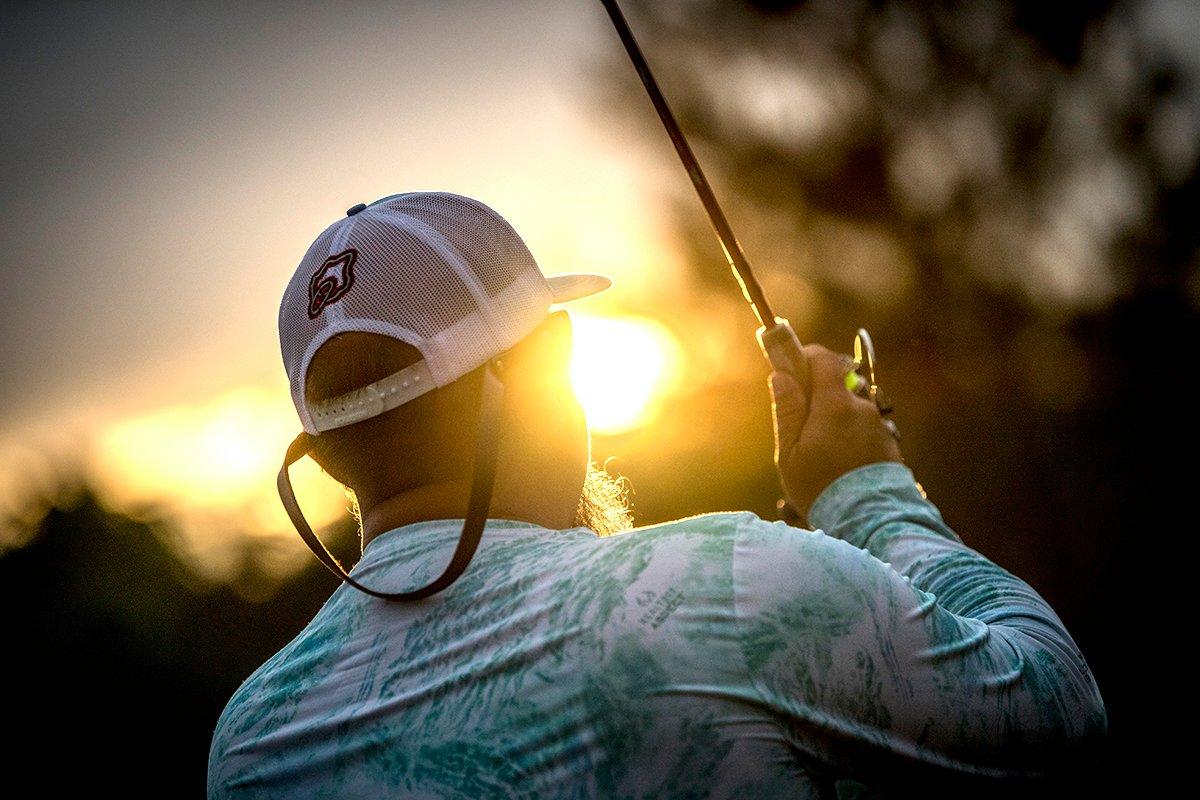It's been a long winter, but the fish are biting now. Here's how to make your first day back on the water a success
Springtime brings the greatest anticipation all year for a day on the water. We've made it through the dark times, and there's opportunity ahead.
But before we jump in the boat and go, there are a few things to consider. A checklist, of sorts, that will prepare you properly and point you in the right direction, regardless of the species you pursue. These 30 tips will all but guarantee you a great opening day on the water. They're divided into four sections including boat prep, fishing considerations, tackle maintenance, and personal attention. Each is equally important, so let's get started.
Boat Prep
Let's assume you changed the oil on your four-stroke, winterized correctly, and greased the trailer bearings. The standard chores have been done. From there, consider the following:
1. Take off the cowling: You'd be surprised what can build a home inside your engine's cowling over the off-season. Ants, roaches, and even mice often get in, somehow. Do a quick visual and make sure things are clean and tidy like you left them.
2. Grease your winch and trailer jack: Grease disappears with exposure to air. It also attracts particulate matter that you don't want. It's best to wipe old grease clean and apply a new application.
3. Check your winch strap: The nylon strap that cranks up your boat is subject to deterioration, most commonly from UV exposure. As soon as you notice stiffness and wear, it's best to replace the entire thing. Otherwise, it will fail when you're cranking up the boat, making for an exciting time at the boat ramp.
4. Check the date on your flares: Your flares expire after a few years, and they are always the first thing checked by an on-the-water official. Today, lifetime LED flares are available, and they may be a good choice to avoid having to pitch unused equipment so frequently. Either way, check the date.
5. Run your boat before unhooking: Once at the ramp, back your boat in and leave it hooked up to the trailer while you run the outboard for five minutes or so. Often, winterization causes build-up which needs to be cleared out. It's best to do this prior to floating out to sea. Turn the boat off and crank it back up several times to ensure a strong battery and good starter. Spend a few minutes here, knowing you're still able to pull the boat out of the water with no extra effort.
6. Check your pumps: The most common problem from improper winterization in cold climes is a cracked bilge or livewell pump. Often, you won't be able to see small fractures until you watch the water run out of them. In some cases, these pumps are directly plumbed to the lake, therefore allowing unlimited amounts of water into the boat when they fail. After dropping your boat in the water — and, again, still hooked up to the trailer — get a good visual in your bilge and check for leaks.
7. Examine your trailer tires: Another one that just requires a good visual. Look for bubbles and bumps, especially on the sidewalls. Trailer tires are subject to failure due to big temperature swings and sun exposure. If possible, jack the trailer up at home and spin your wheels, listening for bearing squeaks or brakes rubbing.
(Don't Miss: Why You Suck at Throwing a Baitcaster)
Think of the Fish
Regardless of the fish you pursue, there are always a few principles that apply. Fish are all cold-blooded and therefore slow down in the winter, regardless of where they live. In the early spring, it's often important to slow down with them.
8. Monitor the water temperature: This is the most important tip of the day. A slight uptick in water temp can drastically impact your fishing success. A water temperature gauge is likely built into your fish finder; be sure you know how to access it, and pay attention to the numbers. Spend more time in the places where you see the warmest water.
9. Play the wind: Warm, sunny days with a breeze will help the cause. Cold, windy mornings will hurt. Be sure to be in the place where the wind is positively impacting the water when it matters most. Long ago, I learned that nothing warms lake water faster than wind, even more so than a warm rain.
10. Find clean water: Nothing spoils a spring bite more than cold, muddy water. Get in the cleanest water you can find. Often, it's vital that fish can see your lures from a long way away in the spring, in order for them to be convinced to spend the energy to pursue.
11. Divide the lake into sections: Commonly, most of the fish in a lake are doing the same thing, especially in the early spring. Here, it's best to divide the lake into sections: deep water basins and big creeks, tributary areas, and the far back reaches. Fish will inhabit the same zones throughout the body of water. For instance, if the water is still relatively cold, bass, crappies, and panfish will be in the main lake areas. Once the sun hits the shallows, pike will rush the backwaters. Monitor patterns and repeat them.
12. Follow the sun: Where is it shining, right now? Fish there. It's often that easy. And never overlook the power of sun exposure on a flat bank, especially one with rock or riprap. The fish will be there.
13. Fish later in the day: This goes along with our previous tip. While we all are chomping at the bit this time of year, sleep in anyway. The best fishing is from noon until early evening.
14. Scale down: Everything. Lures, line, rods, blade size, skirt material, hook size, crankbait wobble; you name it. Scale everything down. Small and subtle works when the water is cold.
15. Switch up lures: Here's one I stumbled on long ago. While fishing shallow, cold-water bass with a crankbait, I often found one particular lure would far outperform others in the same category. Upon further review, there was a subtle difference in action. Cold water fish usually prefer subtle, action-less baits. However, it often takes a bit of experimentation to determine the specifics. But once you lock in on a good cold-water lure — a Wiggle Wart, for instance — the results are obvious.
16. Use live bait: There, I said it. It's rare that I use live bait for any type of fishing. But the benefits are often undeniable in early spring. My theory has always been the overlooked scent factor live bait attributes, whether it's crappie minnows or nightcrawlers for catfish. In cold-water periods, it might be best to consider toting a bait bucket.
17. Fish the steep sides: Early, early in the season — we're talking the coldest water of the year — most gamefish will still be in winter mode. Look for steep channel banks, deep areas near the dam, or the deepest pools of a river to attract them. Start there.
(Don't Miss: Shallow-Water Fall Bass Tactics)
Maintenance Tasks
Don't overlook the small details to ensure you fish at your best.
18. Change your line: You're doing this regularly, right? If not, this should be Step No. 1 toward your new season. It's not necessary to remove all the line from your reels; just take the top third, and replace with new.
19. Maintain your reels: Have you cleaned and greased your reels? Spinning reels are fairly easy; modern baitcasters and trolling reels a bit more intricate. I long ago gave up taking apart these techno marvels, and instead send them in to the original manufacturer for service. Many, like my Daiwas, can be serviced for about $20 apiece regardless of age. They come back silky smooth. For the spinners, soap and water and a little reel grease go a long way.
20. Change your hooks: I can't overstate this. The single most-important thing you can do to catch more fish is to use quality, sharp hooks. Buy in bulk and change regularly.
21. Reduce your tackle: Where else will you see this advice on a fishing page? Instead of falling into the magic lure trap, continuously buying new baits to solve your problems, get accustomed to what you have and remove the excess you don't use. Its far more valuable — any time of the year — to keep a bait wet and eliminate unproductive water than to continuously cycle through lures you have little or no confidence in. Removing excess gear gives you a clearer picture of the job at hand.
22. Clean your rods: Spray the cork or foam handles with a diluted solution of something like Mr. Clean. Use a medium-duty brush and a hose. Check the guides with a Q-tip to ensure no snares or snags. Clean rods fish the same, but give added enthusiasm to the pursuit.
(Don't Miss: 3 Best Lures for Catching a 10-Pound Bass)
Personal Attention
A number of often overlooked variables go into fishing success. Don't ignore these.
23. Buy your fishing license: Surely, you've already done this, right?
24. Donate the dollar: Most state agencies have an added donation option when purchasing a license. Give a buck or two. It goes to youth outreach and brings kids into the outdoors, which is something we could use a little more of these days.
25. Check your PFD: Have an inflatable PFD? They're the best. However, they need to be maintained like any other piece of equipment. Check to ensure the gauge on your PFD shows green, indicating a capable outfit. Wear it all day when the water's cold.
26. Prepare for icy ramps: If you live above the freeze line, be sure to prepare for icy conditions at the boat ramp. Carry a big bag of rock salt in the truck, along with a tow strap. Should you get pinned down on a slick spot, often another motorist can tow you out from the top of the ramp. Rarely, though, will they have a strap.
27. Buy new sunscreen: Sunblock loses its effectiveness over time. It's best to scrap the old stuff left in your glove-box and get some new. This time of year, it's usually cheaper, too.
28. Pack extra clothes: Here's an overlooked safety tip. When fishing big water, always pack a change of warm clothes. A thick fleece coat, insulated bibs and wool socks will suffice. Picture yourself going in and getting soaked, then having to navigate back to the ramp in big, rough water. Not a good situation. Your best chance is to get dry and warm immediately. Wool and fleece will do the trick, even when wet.
29. Buy a water jug: A few years ago, I purchased a 1-gallon, insulated Yeti jug that I fill with water and haul with me on all my outdoor excursions. What a relief to no longer rely on plastic water bottles, or dispose of mountains of waste, everything I go out fishing. Start the year right.
30. Keep some fish: This is the best time of year to catch, keep and eat freshwater fish. Small bass are excellent. Cold-water crappies and gills are even better. Pike? Yes (I YouTubed how to clean them). Catfish, trout, salmon and even white bass have firm, excellent flesh in cold water. Keep a few mid-sized fish for a fish fry later in the year.
Thirty quick tips, and I feel like we've just scratched the surface. We all wish we could fish more, so when given the chance, it's important to be ready. Reviewing these ideas will put you on the right path.
Finally, it's time to get out there.
(Don't Miss: 5 Favorite Fall Fishing Bites)












